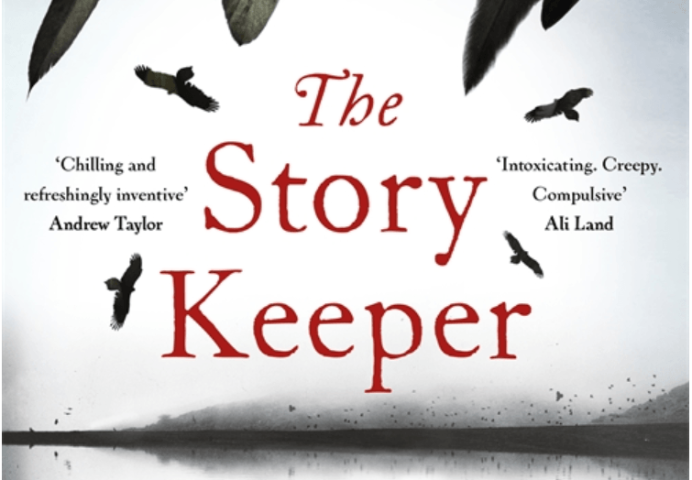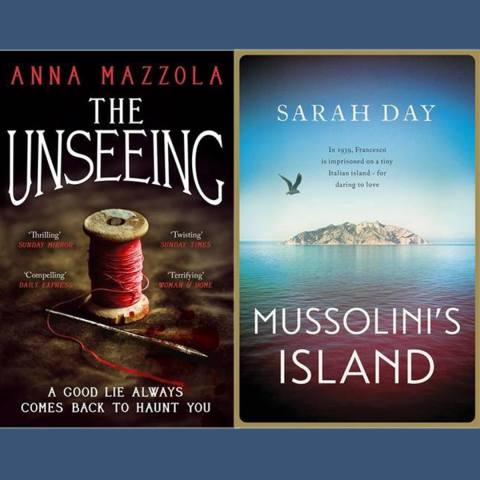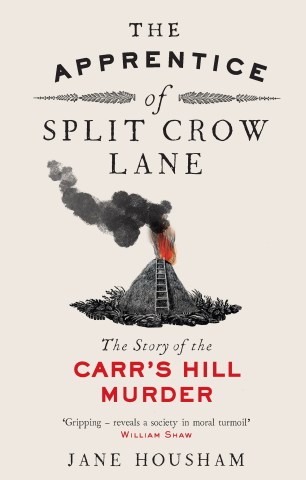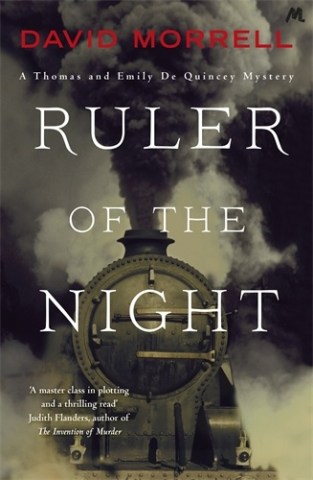Anna Mazzola and Jane Housham talk THE UNSEEING and THE APPRENTICE OF SPLIT CROW LANE

Anna Mazzola: So we’ve both ended up writing about awful crimes from the nineteenth century. What’s your excuse?
Jane Housham: I was researching my dad’s side of the family, who come from the North East, when I came across reports of an awful murder in Newcastle and Gateshead newspapers. At first I was just curious to know whether we might have a murderer in the family, but the more I looked into it, the more compelling it seemed to become, and aspects of the crime seemed to shake up things I thought were givens about nineteenth century crime and psychiatry. I’m hoping other people will find it just as fascinating.
What about you, how did you come to choose the particular story you’ve used as the basis of The Unseeing?
AM: Back in 2011, I was looking for short story ideas and came across an account of a murder committed in Camberwell, not far from where I live. The crime was both peculiar and horrific: James Greenacre, the man ultimately convicted of the murder, had distributed the victim’s body parts about London. However, when I read the trial transcript, I realised that this was the story of Greenacre’s lover, Sarah Gale. She was accused of helping him to conceal the murder of another woman, yet said almost nothing to defend herself at trial. I needed to work out why.
JH: So when you set about writing your novel, did you feel any tension between the facts of the case as they were known and the direction you wanted to take it in as fiction – or is it impossible to answer that without giving too much away?
AM: Yes, there was very much a tension between the facts of the case and the world of the novel. The first draft kept quite closely to the historical reality (so far as I could work it out from the scant records), but I realised that in order to create a story that anyone would want to read, it had to be much more surprising and compelling. The final version of The Unseeing is therefore based only loosely on the real case. It’s something I struggled with, and it’s one of the reasons that the novel’s key theme is truth and deception – how we see other people’s stories.
I noted that in the Foreword to The Apprentice, you said that, ‘When you follow a trail of real events, you don’t have the same freedom as a novelist to shape your narrative, to introduce extraordinary twists and turns’. Were you ever tempted to turn the story of the Carr’s Hill Murder into a novel?
JH: I wasn’t tempted to turn it into a novel, but I did work on the book’s structure, to try to make sure that it was interesting and suspenseful all the way through. There was a temptation to make the revelation of the ‘whodunnit’ aspect of the book come later, like a traditional ‘big reveal’, but I found the story of the ‘why’ and also of what happened to the murderer afterwards were just as fascinating. Although I love crime fiction, in this particular case I thought the truth was even more compelling and I wanted to include all the strange details I’d pulled together from so many disparate sources. They speak for themselves, I think.
AM: They do. In fact, I was amazed at how much you’d managed to find and piece together. My own research was far less fruitful as the police file had been destroyed, and Sarah’s petition had gone missing. I thought the correspondence from Cuthbert Carr’s father was particularly moving. And the structure certainly was suspenseful – I raced through it, wanting to know why Cuthbert acted as he did.
Did you feel that you needed to direct the narrative in a particular way given the horrific nature of the crime?
JH: The murder of little Sarah Melvin is horrific, I agree, as are a number of the other crimes I look at in the book, and I took care not to sensationalise them. But one of the key themes of the book is the incredible frankness with which such horrors were reported in Victorian newspapers – and with an unexpected soberness as well. This is quite a revelation and contributes to a picture of Victorian life that I think will differ from some of our fixed ideas about it.
AM: That was my experience too. I was often surprised by the way that the Edgware Road murder was reported – there was no attempt to temper the facts for the audience. Sometimes, quite the opposite: they seemed to revel in the horror of the crime – the blood on the cutting room floor, the victim’s head pickled in a jar. It led me to wonder, at times, why I had been drawn to such a dreadful crime. Did you even question whether the Carr Hill murder was a story that should be told?
JH: I did think carefully about it, but I believe a detailed account such as this can shed light on important aspects of social history (as well as being extremely interesting as a crime case). As everything I’ve written is closely based on things that were written in 1866, it would be extraordinary if that story could no longer be told 150 years later. I don’t think that’s the case.
I think both of us have attempted something similar: we’ve tried to unlock all the hidden twists in a sequence of real events and to get to the bottom of motive and character. A difference, perhaps, is that by staying in the realm of non-fiction/journalism, I’ve been completely free to bring later insights (such as in psychiatry) to bear on my subjects. Did you feel that this was an issue, either way, for you once you were committed to a period setting for your fiction?
AM: Yes, I was fascinated by your use of modern psychiatry to explain Cuthbert’s behaviour. I interpreted Sarah Gale’s actions to be the effects of abuse and coercive control. Those weren’t terms that were used at the time, of course, but there were organisations that helped women who had been ‘mistreated’ and there was an acceptance, at least by the legal system, that people sometimes acted under the influence of others (there was, for example, a defence where a woman had committed a crime under the influence of her husband).
JH: My own view is that, really, it’s impossible to step outside the very complex sensibility of one’s own time. We know so much and it’s very hard to ‘unknow’ (or ‘unsee’!) it. And even if things hadn’t yet been identified and named at a particular period in history (such as PTSD or autism, for example), they presumably still happened to people.
AM: Yes. It’s heartbreaking now to think about how many people, both within the criminal justice system and outside it, must have been living with mental disorders undiagnosed and untreated. For my second novel, I’ve moved to the crofting communities of nineteenth century Skye, where mental and physical ailments were often attributed to spirits – those who changed dramatically were sometimes thought to be changelings. As you can tell, it’s another barrel of laughs. Can you tell me a bit about your next project?
JH: That sounds like a wonderful setting. I’ll definitely look forward to reading it. I’m gathering together a new set of stories from the middle of the nineteenth century that shed light on terrible affairs of the heart. My head’s already so full of heartbreak and madness!
AM: Madness and heartbreak is what book two is all about, it seems. Thanks so much for chatting to me and good luck with the launch of The Apprentice of Split Crow Lane.
Jane Housham’s THE APPRENTICE OF SPLIT CROW LANE and Anna Mazzola’s THE UNSEEING are out now!









